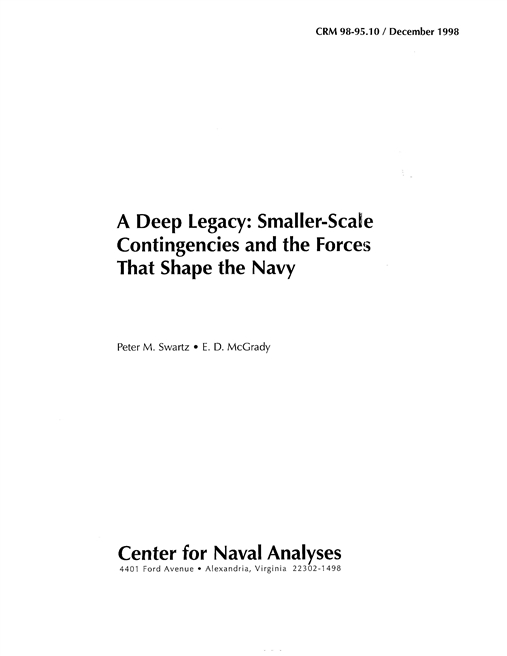The basic method used in this paper is simple: we look at the past andnotjust the recent past-to help us understand the decisions the Navy must make about the future.
The results are also simple: there is no one fundamental principle of Naval force other than flexibility. Naval forces adapt to their techno logical, political, and international environments. When the environment changes, so does the Navy.
The U.S. Navy today often sees itself almost exclusively as an extension of the Navy of the Cold War. This is understandable: the Cold War lasted for over four decades. That long period saw the for mative experience of the current generation of naval officers and their civilian colleagues. Not only that, it also was the predominant experience of the generation that served before them, and that educated and trained today's Navy.
The Cold War, however, was a unique period, with a set of special characteristics that may or may not apply to current and future envi ronments. Also, the Cold War is not the only legacy the current and future U.S. Navy has. The Navy had been many places and done many things before 1945-indeed, before 1845. To the extent the Navy looks to past experience as one input to guide future decisions, it may well be able to draw on its earlier history-what we call its "Deep Legacy"-as much as if not more than its more recent Cold War experience.
This paper demonstrates that the Navy has almost always been involved in smaller-scale contingencies (SSC) and operations other than war (OOTW). For long stretches these operations were all that the Navy did. More commonly, however, they shared the Navy's list of missions with various forms of high-intensity and mid-intensity warfighting and the preparation for same.
Download reportDistribution unlimited. This document is approved for public release.
Details
- Pages: 161
- Document Number: CRM 98-95.10
- Publication Date: 12/1/1998
